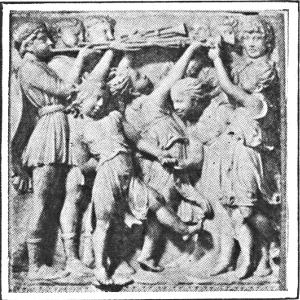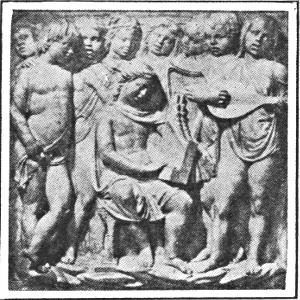The Mentor, No. 41, Famous Composers
FAMOUS COMPOSERS
By HENRY T. FINCK
Author of “Wagner and His Works,” “Success in Music,” “Chopin,”“Grieg and His Music,” etc.


THE MENTOR
SERIAL No. 41
DEPARTMENTOF FINE ARTS
MENTOR GRAVURES
| FRÉDÉRIC FRANÇOIS CHOPIN | 1810-1849 |
| FELIX MENDELSSOHN-BARTHOLDY | 1809-1847 |
| FRANZ PETER SCHUBERT | 1797-1828 |
| ROBERT SCHUMANN | 1810-1856 |
| FRANZ LISZT | 1811-1886 |
| JOHANNES BRAHMS | 1833-1897 |
While it is generally understood that the three great musical countriesare Italy, Germany, and France, it must not be forgotten thatPoland revolutionized the music of the pianoforte, the most popularand universal of all instruments. That small country looms up very bigindeed in the history of the piano. Paderewski, the greatest pianist of ourtime, and one of the best composers (although his day as such has not yetcome), is a Pole, and so is the pianist who ranks next to him, Josef Hofmann.Karl Tausig, in his day, was a piano giant; while three otherPoles are well known to all music-lovers of our time,—Moszkowski andthe Scharwenka brothers, all of them composers for the same instrument.
CHOPIN, THE SOUL OF THE PIANO

FRÉDÉRIC CHOPIN
From a portrait made by Stattler, afteroriginal by Ary Scheffer.
Greatest of all the Poles, however, is Frédéric François Chopin. Whilehis name is usually printed with the French accents, and the French areinclined to claim him as their own because his father emigrated fromFrance to Poland, he himself was as thoroughly Polish in all his sympathiesas his mother, and there is reason to believe that his paternalancestors also came originally from Poland. Some of the traits that haveendeared his music to all players and listeners—its elegance, its charm,its polished style—make it seem French; but the Poles also are noted forthese same qualities; and in other respects Chopin’s music is as thoroughlyand unmistakably Polish as it is an expression of his unique genius.
This is true particularly of his polonaises and his mazurkas. Polonaisesseem to have been played originally at the coronation of Polishkings when the aristocrats were marching past the throne; while themazurkas were quaint old folk dances. In Chopin’s pieces the aristocraticand the folk elements are artistically blended, and that is one oftheir principal charms. Like Luther Burbank’s wonderful new fruits, theyunite the raciness of the soil with the qualities of his own creative genius.
